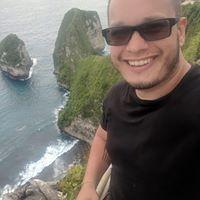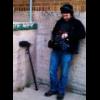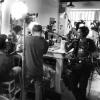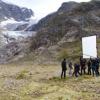-
Posts
34 -
Joined
-
Last visited
Contact Methods
-
Website URL
http://chunyili.com/
-
Skype
jimmycat603
Profile Information
-
Location
London
-
About
Production sound mixer based in Taiwan, mainly focusing on drama and documentaries
-
Interested in Sound for Picture
Yes
Recent Profile Visitors
1,001 profile views
-
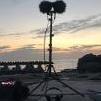
round-table overlapping dialogues with uncertain camera movement
jimmycat replied to jimmycat's topic in General Discussion
@The Documentary Sound Guy thanks for the advice. Very helpful. Happy New Year! -

round-table overlapping dialogues with uncertain camera movement
jimmycat replied to jimmycat's topic in General Discussion
I'm sorry that maybe walla is a misleading term. Although the mimed actors won't have important lines, the director wants the audience to vaguely hear what they're chatting about. It's a scene with only two tables, each with around ten people. In that situation, one is supposed to be able to vaguely hear who is talking what, if listening attentively. Also, the vibe at each table is very different, one energetic, the other suspicious. And the lead character moves from one table to the other. So I suppose at least one wild recording for each table is required. Besides, the location is a yard, adjacent to a road on one side and field on an other. If the mic(s) set too far away from the voices, I'm worried the insects and traffic can be too loud. But I got your -

round-table overlapping dialogues with uncertain camera movement
jimmycat replied to jimmycat's topic in General Discussion
@Philip Perkins @humbuk @The Documentary Sound Guy Thank you all for the suggestions. I just had a crew meeting today. Things have become much less tricky. The director and the DoP said they’d roughly break and block the shots and guaranteed that the camera will stick to the same characters within a shot. Although the overlapping and improvisation are still inevitable, some minor characters’ lines will be simplified to just general chatting. As you all have mentioned, the conversation will be led by the protagonist, which the main boom will follow. And the 2nd boom will cover whoever the lead is talking to, whether on or off camera, for the inevitable overlapping response. All the actors with clear lip movement in the shot and the ones they’re having meaningful conversation to will speak and all the rest will be miming. The actors with meaningful lines will be wired. We’ll be given some time for the wild recording for those background chatting of the minor roles. But it leads to a concern I mentioned in my original post, which is #5 - If I only do one general walla for the main table with all the characters except for the lead character, the walla will contain the voice of people talking in the shot. But if I separate the characters into groups for separate wild recordings, it’s very time consuming. Any suggestions about this concern? @The Documentary Sound GuyThat's a solid advice. Thank you very much. I'll keep that in mind. -

round-table overlapping dialogues with uncertain camera movement
jimmycat replied to jimmycat's topic in General Discussion
I remember that scene! I just re-watched it on Netflix. Is it only after Adam Driver enters the room to talk to Wally Shawn that all the actors are talking at the same time or throughout the whole scene all the conversations, including the off-camera ones, are happening together? I'd be very surprised if it's the later. Do you mean the scene that ends with Adam Driver singing on the stage? It's so good to have actual scenes to discuss. Thanks. -

round-table overlapping dialogues with uncertain camera movement
jimmycat replied to jimmycat's topic in General Discussion
@BAB414 It’s somehow reassuring to know that Noah Baumbach takes this approach and still makes sound acceptable. Thanks for sharing. Would you mind to specify some of the scenes done this way so that I could watch them as reference? -
First of all, I apologise if this topic has been brought up and I believe it has, but I just couldn’t find useful info. If you could simply share some useful links, I’d be very grateful. I was wondering how fellow production mixers deal with round-table-party-like scenes that the camera adopts handheld-doc style to randomly capture characters who improvise their conversation in each take. Some issues boggle me: Would you request the off-camera and out-of-focus characters to pantomime? I find it very difficult to pull this off if the cameraman doesn’t lock his camera movement. It risks that the off-cam miming actors suddenly pop up in the frame with clear lip movement. Also, in terms of performance, the actors and director can feel uneasy and unnatural if the actors are asked to speak out only when they’re on camera. But, if all the characters(say, ten sitting around a table) are speaking out loudly, the on-camera conversation can be overwhelmed. Although the on-camera dialogues will still be distinguishable on the lavs, it can be disastrous when it goes to the dialogue editing with all the overlapped and improvised off-cam dialogues being too clear. Would you ask the off-cam and out-of-focus characters to lower the volume but keep the energy and only speak with normal volume when the cam is on them? It sounds not practical. Then what instruction would you suggest? Would you wire all the characters in this situation? Ideally, every talent will be wired, but there’s a long take following one of the main characters having conversation with every one on the main table and going to another table greeting ten other characters. Surely, I can ask for miming at the 2nd table before the followed character approaches. But, again, the cameraman can’t confirm what he’s gonna capture at the 2nd table in each take, which means another 10 lavs are required if I wire them all, making it 20 lavs in total. It’s insane for a “scripted” work, isn’t it? In terms of boom mic options, is a MS setup for the main boom op helpful? How would you deploy your 2nd boom op to cover a 10-people-overlapped chatting at a round table to make the post production’s life easier? Finally, in the most optimistic scenario, the camera confirms the movement of each shot. In that case, we can take the standard approach to ask for those out of shot to be silent. However, it brings another question about the wild recording. Assuming it's a 9-minute scene, with the main character(A) speaking to each of the other 9 characters(B to J) at the table for 1 minute each. When the main conversation led by A is going on, we need to have a background layer of other characters talking to each other fervently. My question is: in this wild track, the conversation led by A is always supposed to be silent. When recording this wild, would you ask the whole scene to act for at least 9 minutes again and silence the main conversation in turn(silence A&B for a minute, A&C for another min, etc.). (I hope I got my point across.)? It takes time and can be frown upon on set. I was wondering if there's a more efficient way doing a wild recording like this. All in all, any experience or advice? Thanks.
-
There're a couple of scenes in my coming project with the main actor chatting on his mobile with an actress whose voice has been recorded in another country. The reason we pre-recorded it is that the director wants the main actor to hear the actress' actual voice "IN THE MOBILE" rather than having someone of the crew to deliver the actress' lines on set. During the pre-production, the director will ask the actor to converse with the actress' pre-recorded lines to confirm each break he needs to say his lines and will create audio files scene by scene with enough space for the main actor for his lines. So the overlapping shouldn't be an issue. For playing back the audio file to the actor, obviously an earbud via a G3 kind of receiver is an option, but I'm worried about the shots when the camera angles or movements reveal both of his ears. I'm also worried about the relatively short distance of G3 transmission. When shooing in restricted locations, the directing dept., who is in charge of the playing back, can be far away from the actor. So I'm asking for any suggestion from my dear sound fellows with similar experience. And one further question: I wonder if there's a way for iphones to send an line-in audio file to the receiving end when making a call. That seems to be a perfect solution. I did try the following kind of adaptor(lightning breaking out to 2 TRS jacks, one for external mic, one for external earphone), but somehow it only works with the line-in recording. When making calls, the iphone just automatically ignores the 3.5mm microphone jack and insists the build-in microphone to be on. Any experience with it? https://www.amazon.com/Cubilux-Lightning-Microphone-Monitoring-Compatible/dp/B08Q38FVQP?th=1 Thanks in advance.
-
I own a Lectrosonics MM400C with Countryman EMW, and never thought of using them in salty water. My coming project consists of a scene with two characters talking in the sea. It's scripted, and the director says he won't let the actors go too offshore. Once the sea level reaches their waists, the director's going to call a cut. So I'm considering to take a risk to mic them up. However, if some accident happens, e.g. a sudden wave, and the lav gets soaked, what measures should I take to reduce the salt damage as much as possible? Thanks.
-
@jason porter thank you so much for the helpful info!
-
The XLR connector of one of my UCR411As just fell off out of no reason. The audio is still fine, but since the battery lid won't be able to close anymore, the battery compartment is basically dead. Although I don't need the battery supply, I'm still worried that the loose connector can end up completely falling apart. Is there a way to DIY fixing it? IMG_1600.MOV
-
I have a coming series with some scenes where all female talents are in bikinis having dialogues near a swimming pool. Fortunately, they won't go into the water, but that's the only good thing. The bikini is a big trouble. It's a drama, so if talents are being wired, obviously the lavs are to be hidden, which I doubt can be done. What's worse is that it's a two-cam shoot . If the framing strategy is one for wide, the other for tight all the time, I'm worried that both boom mics won't be able to go close enough. Anyone been in the same situation?
-
Anyone had experience with a pair of 6061s for the same task?
-

distorted while Rx and level on the recorder both are fine
jimmycat replied to jimmycat's topic in General Discussion
@LarryFMay I have your opinion about my case on the distorted low-sens B6? Can the culprit be low-level batteries? Would it hold the loud level well if I rewired it with 3.3k and 1.5k resistors, e.g. Fig.1, instead of servo bias wiring? -

distorted while Rx and level on the recorder both are fine
jimmycat replied to jimmycat's topic in General Discussion
@Izen Ears Dan, good to know I'm not alone. I also have blue-band B6s and red-band COS-11s and have had exactly the same experience with you. Like you said, the blue-band B6 just sounds terribly noisy for regular-levelled dialogues, which made it almost impossible to use in film productions. As for the red-band COS-11, I've never heard it overloading. I had a doc about a professional basketball team where I wired the coach with an exposed red-band COS-11 in those super loud basketball games all the season and never had an issue. I didn't go for the COS-11 for this scene just because I was worried about the rain. I think the best bet in this situation would've been 6061s, if budget allowed. Thanks for sharing. I'll avoid red-band B6s for good. But I'm also wondering: isn't it cheating that Countryman claims the maximum SPL of red-band B6s is 130db when it's clipping so easily? -

distorted while Rx and level on the recorder both are fine
jimmycat replied to jimmycat's topic in General Discussion
@Constantin that’s a good idea. I checked the waveform. It looks fine, no clipping at all.



